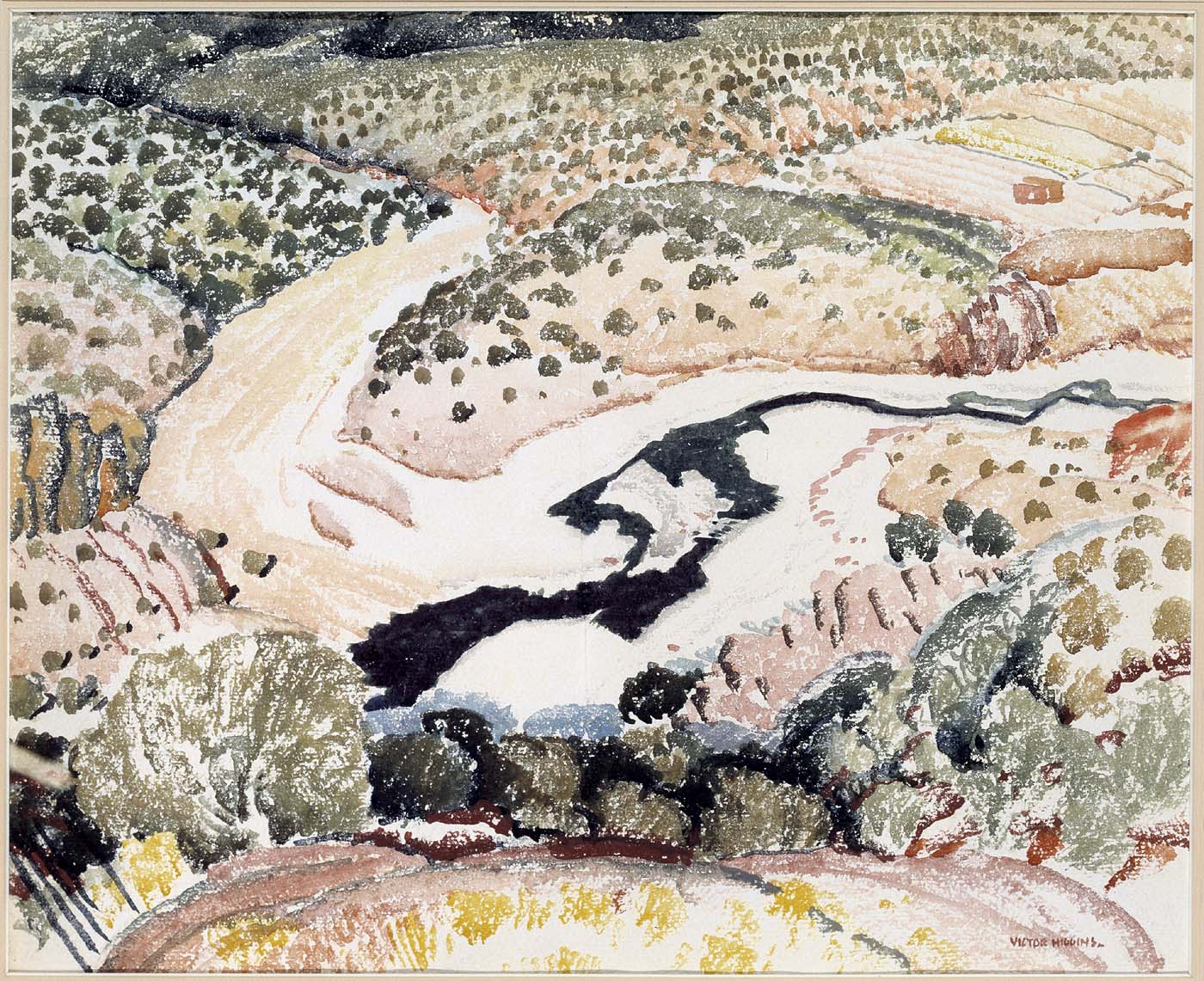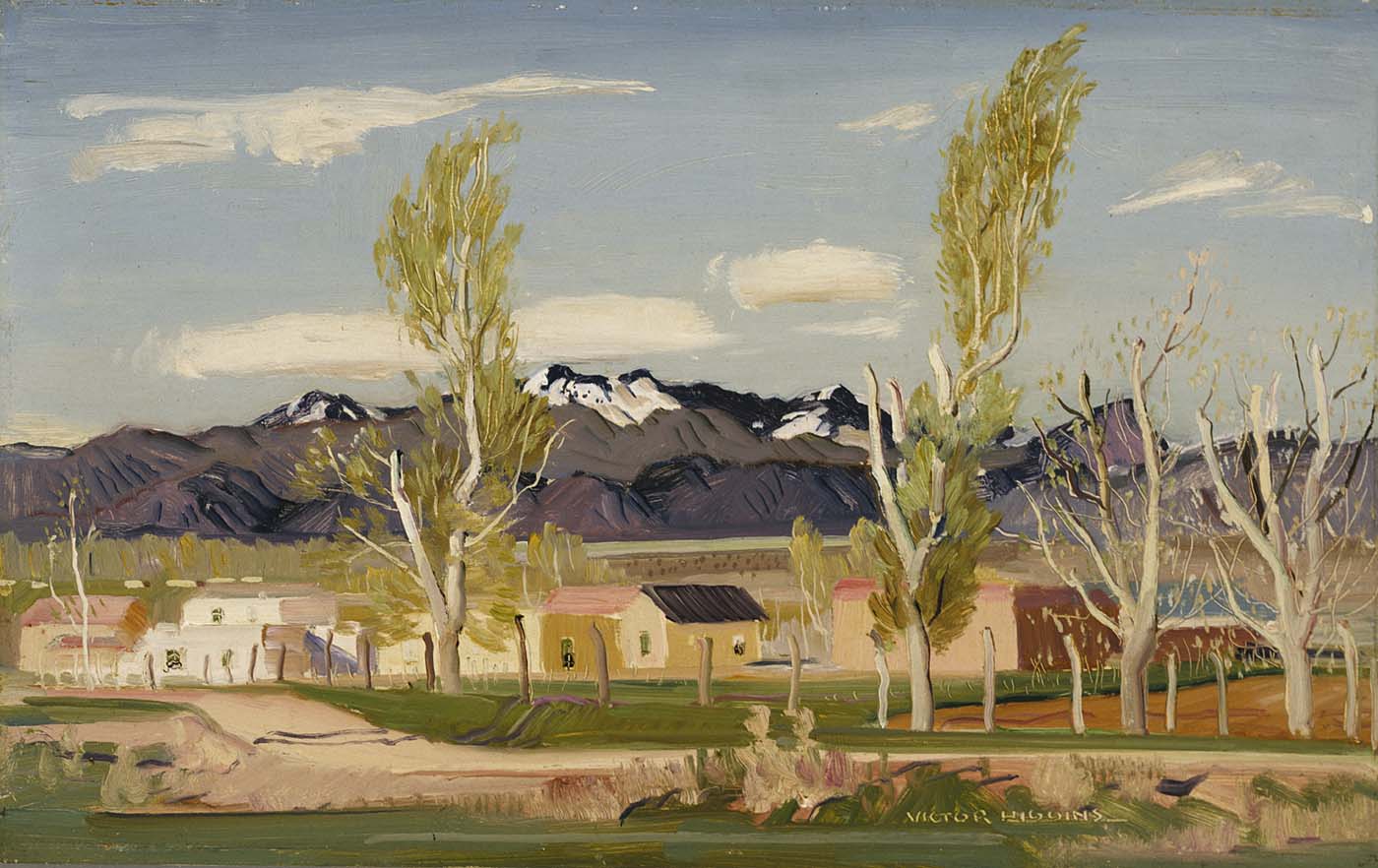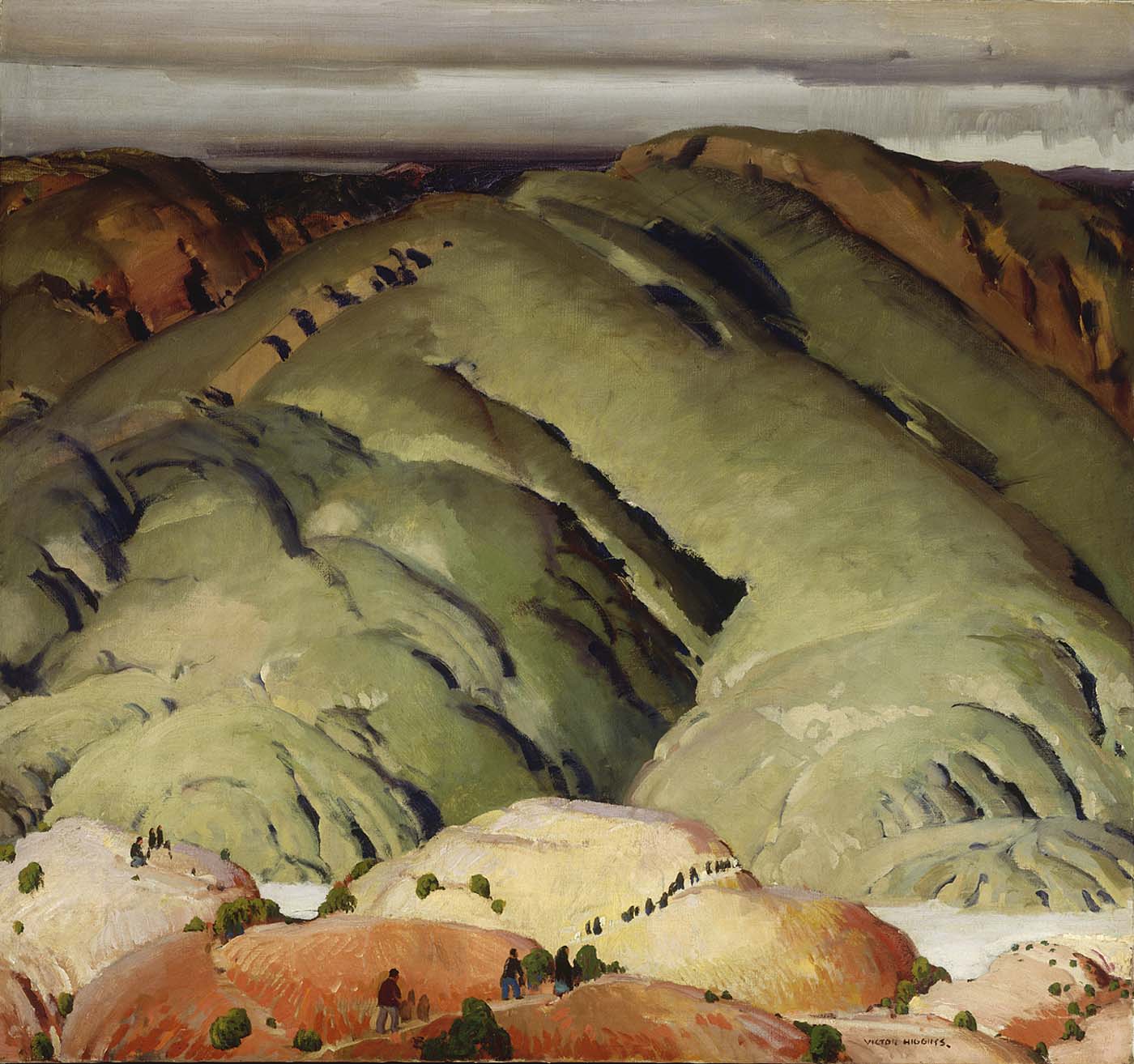Victor Higgins
Painter. At fifteen, Victor Higgins defied his parents' wishes and left his native Indiana for Chicago, where he studied at the Art Institute and the Academy of Fine Arts. Sponsored by ex-mayor and collector Carter Harrison, Higgins spent two and half years studying and traveling in Europe. While in Munich, he associated with fellow art students Walter Ufer and Martin Hennings. The year after his return (1914), Harrison sent him on a painting trip to New Mexico. There Higgins found the strong light, brilliant color, and lure of the land a powerful antidote to the confines of academic training. He joined the Taos Society of Artists in 1917, but he continued to divide his time between Chicago and Taos for some years and to exhibit in Indianapolis and New York, with an occasional painting sent to Europe. As a link between his more conservative colleagues and the emerging artistic developments of the twentieth century, Higgins wedded theory to his own intuitively derived visual harmonies. The result was a rich and varied body of work in still life, figure painting, and, most significantly, landscape.
References
Art Gallery of the University of Notre Dame and the Indianpolis Museum of Art. Victor Higgins. Notre Dame, Ind.: Art Gallery of the University of Notre Dame and Indianapolis Museum of Art, 1975.
Bickerstaff. Pioneer Artists of Taos, pp. 175–93.
Art Museum of South Texas. Victor Higgins in New Mexico. Corpus Christi: Art Museum of South Texas, 1984.
Charles Eldredge, Julie Schimmel, and William H. Truettner Art in New Mexico, 1900–1945: Paths to Taos and Santa Fe (Washington, DC: National Museum of American Art, Smithsonian Institution, 1986









